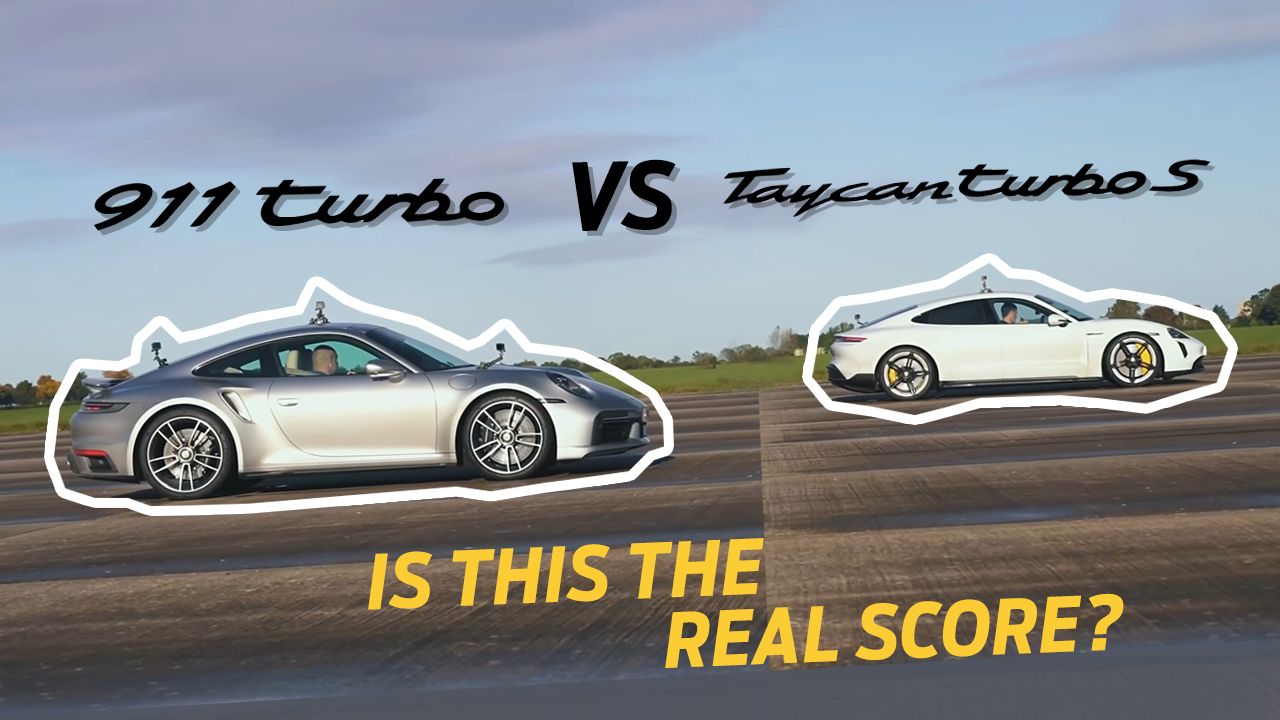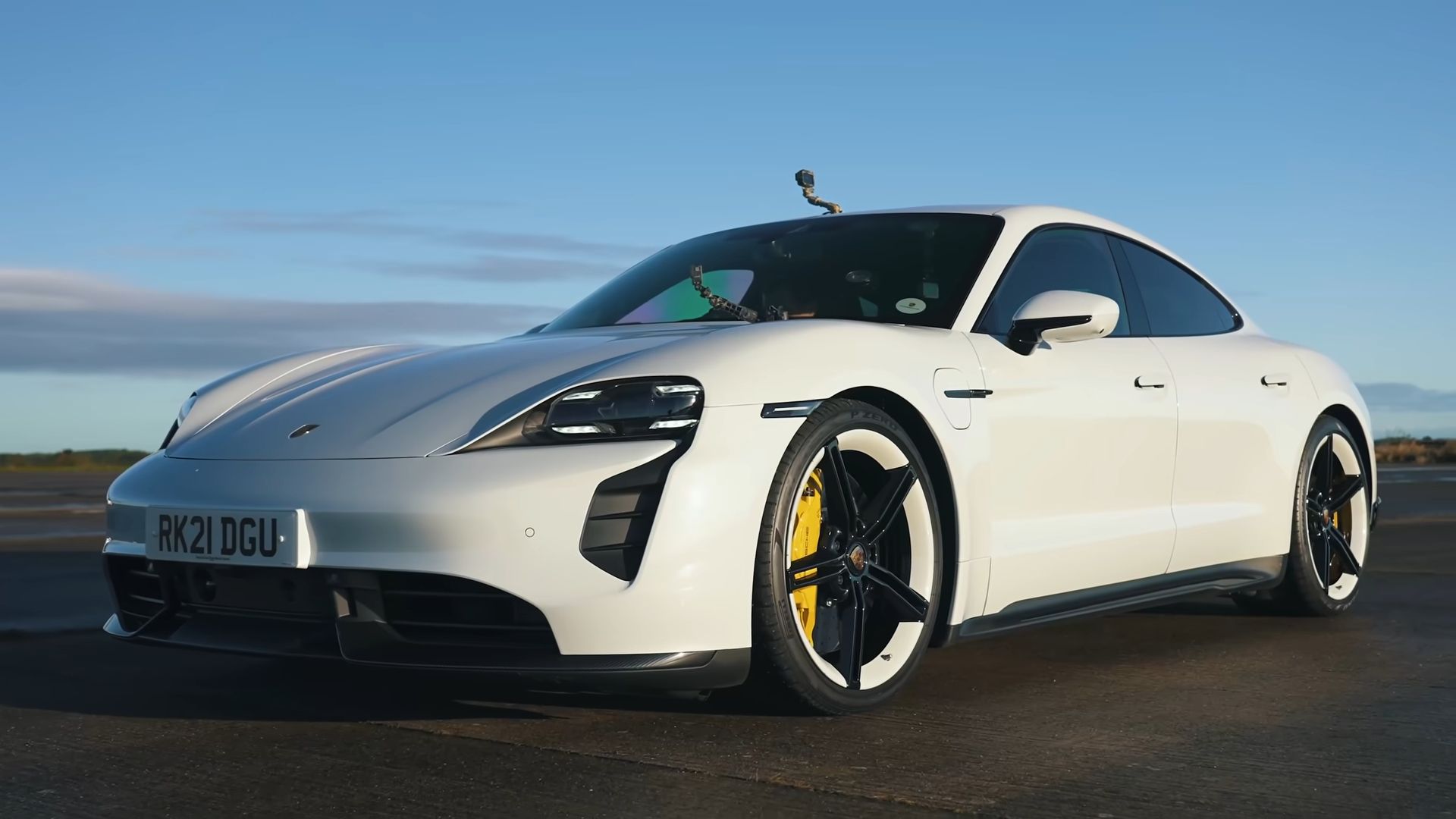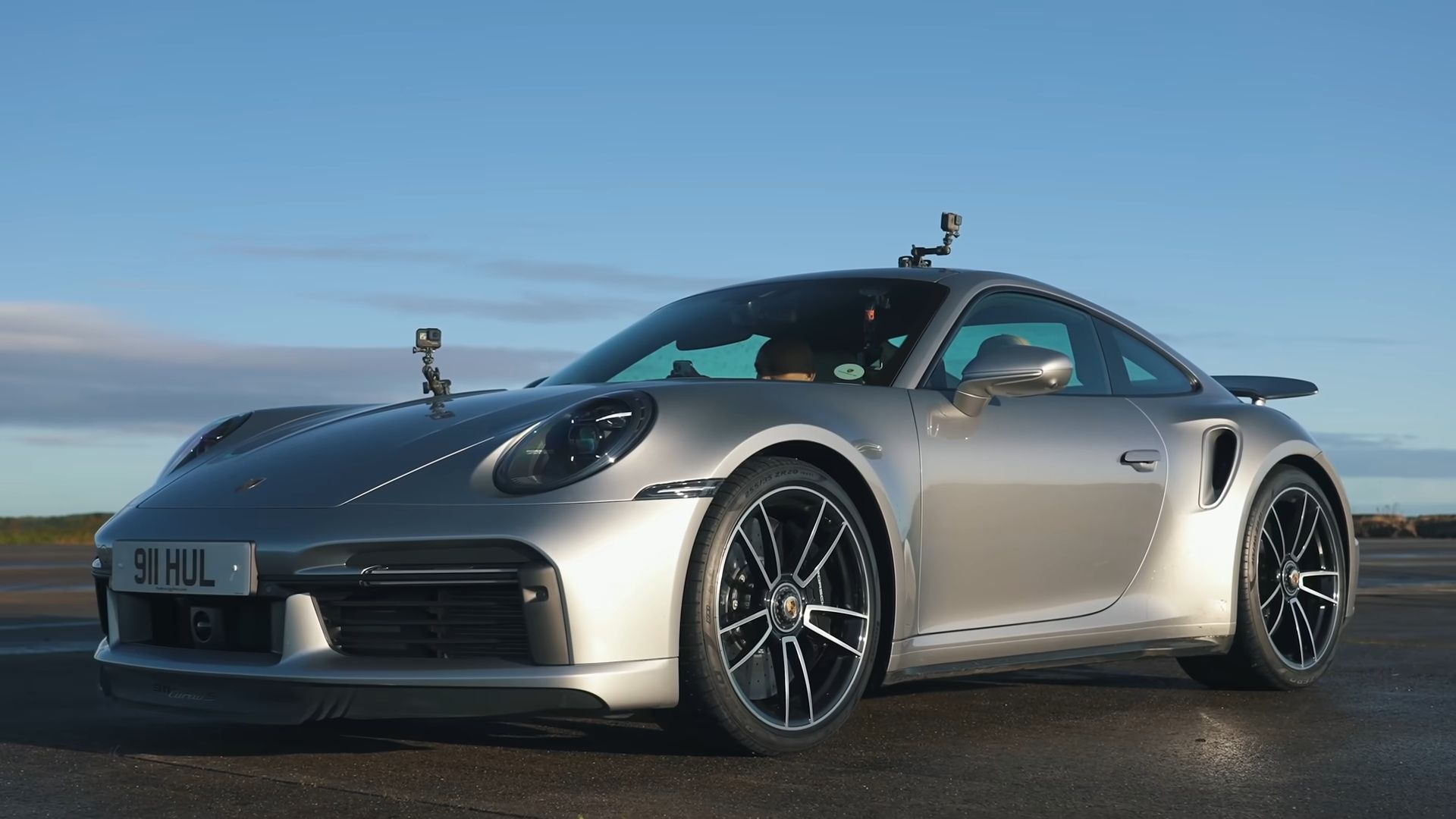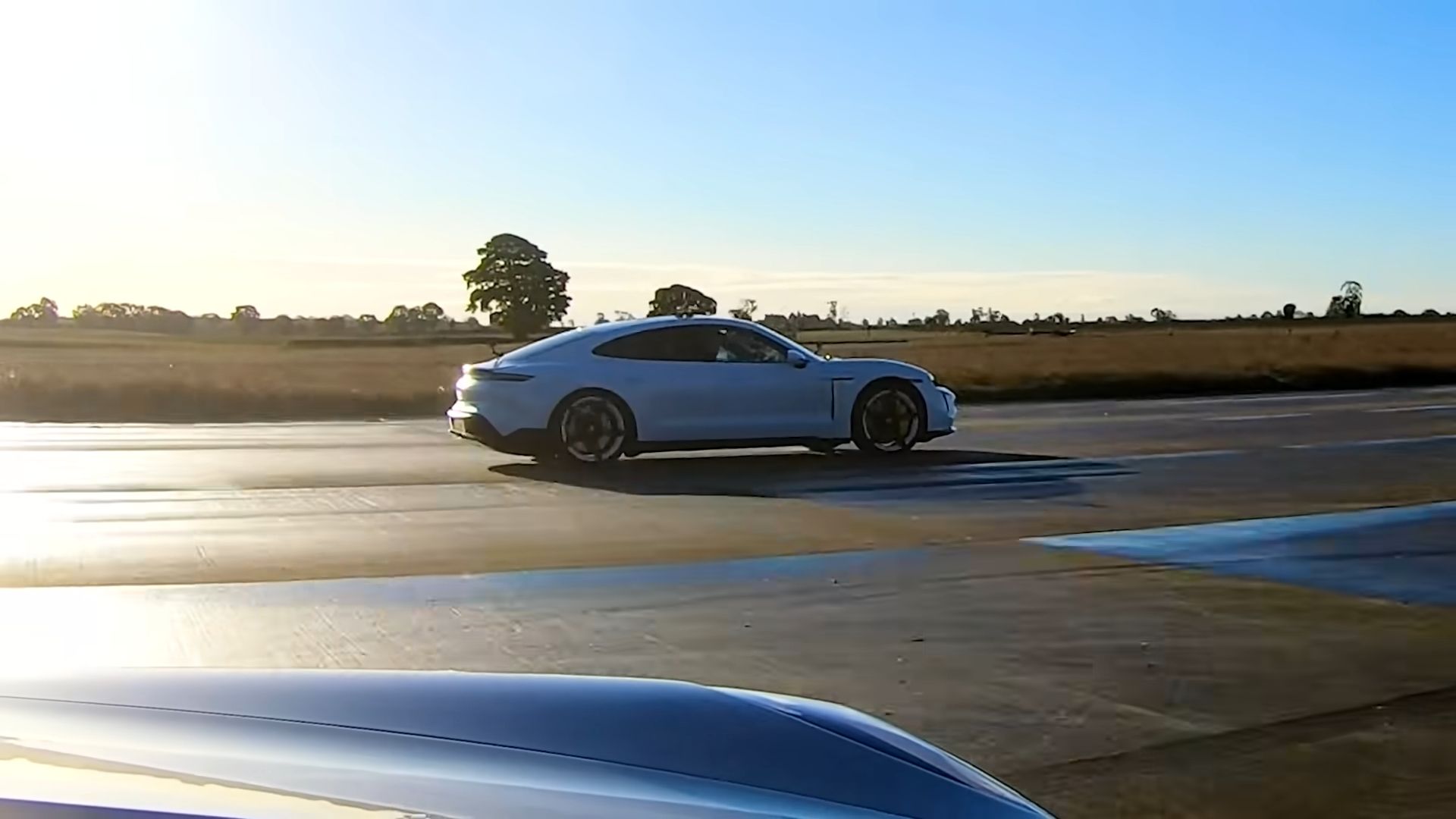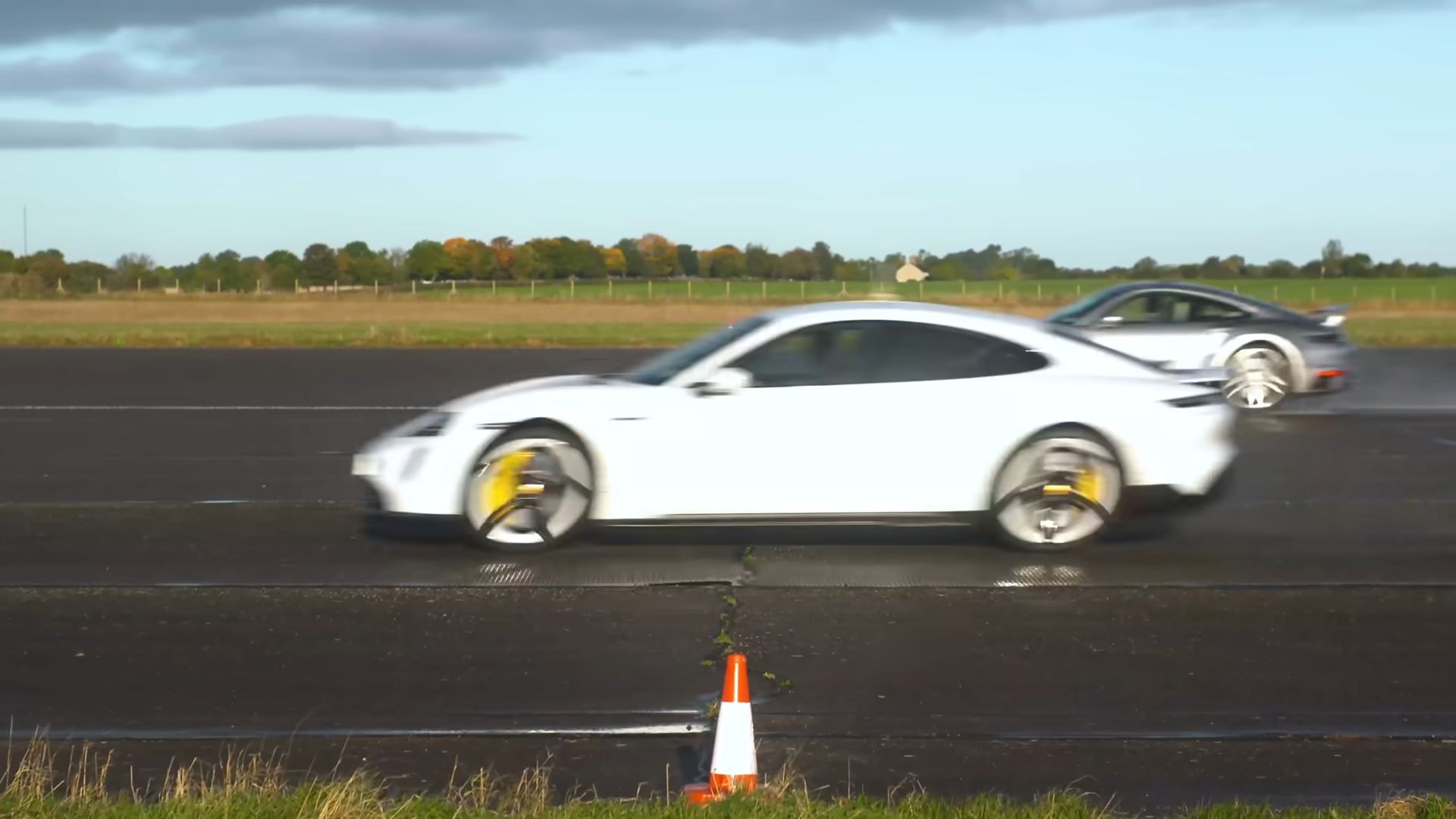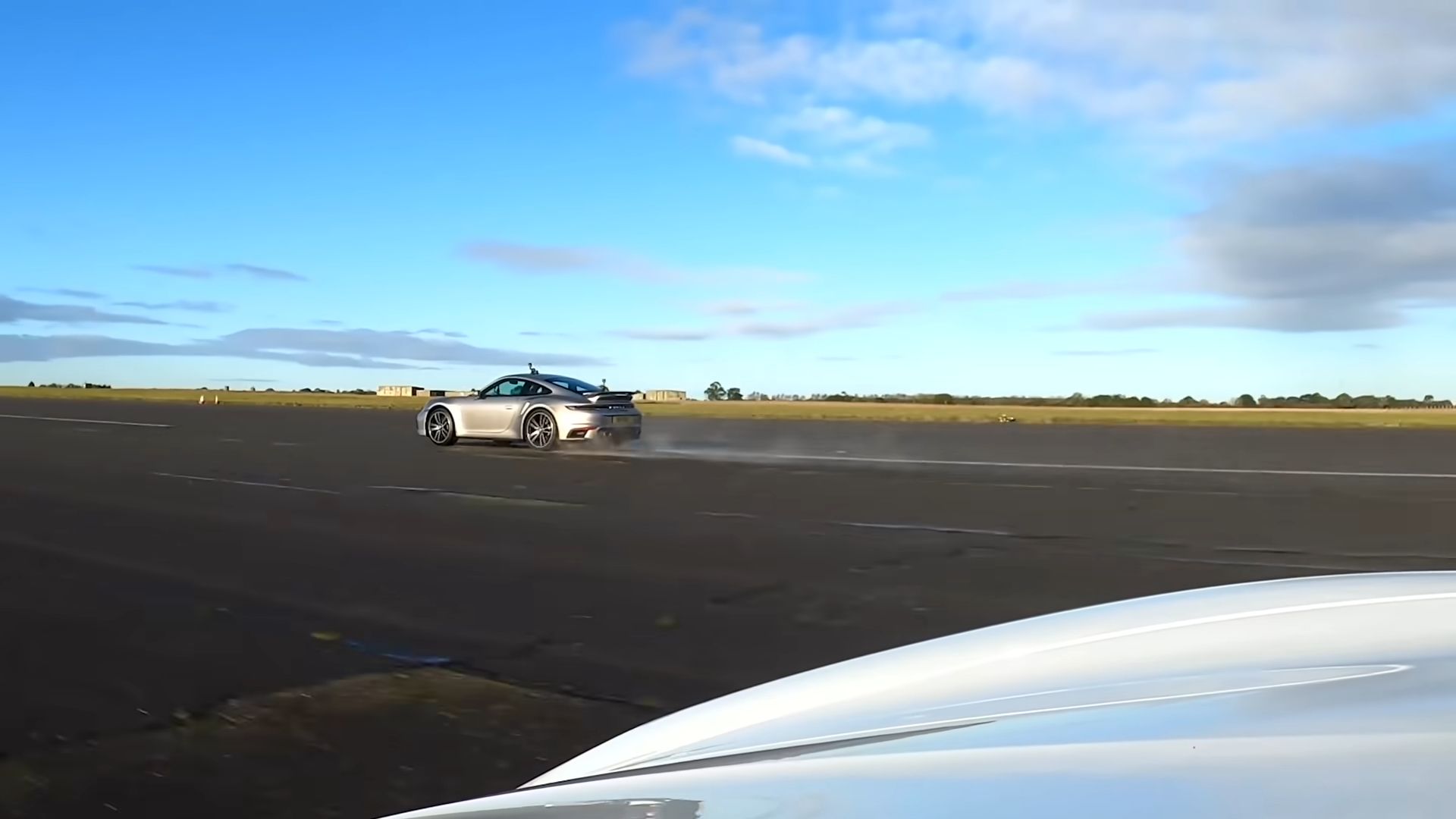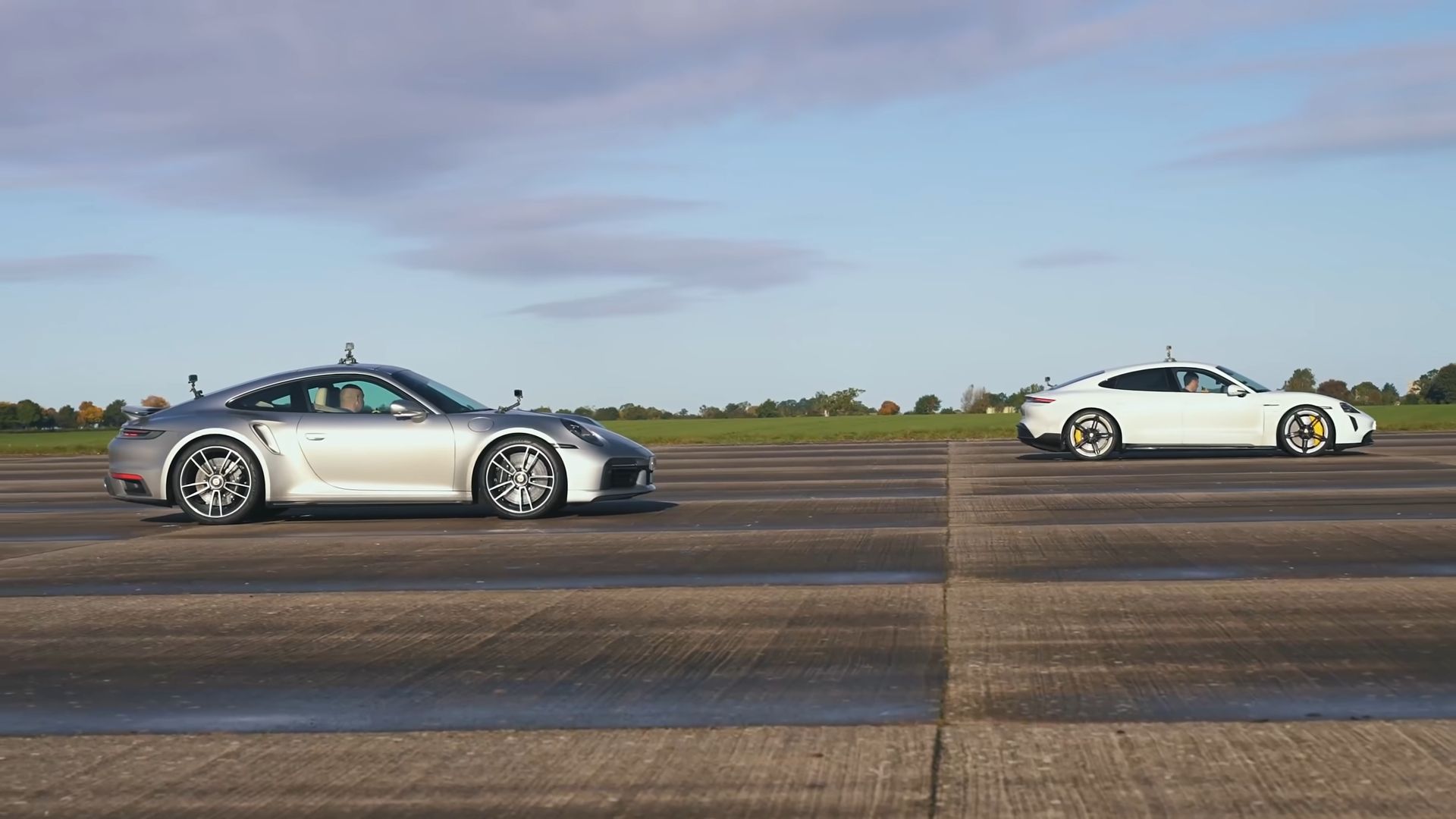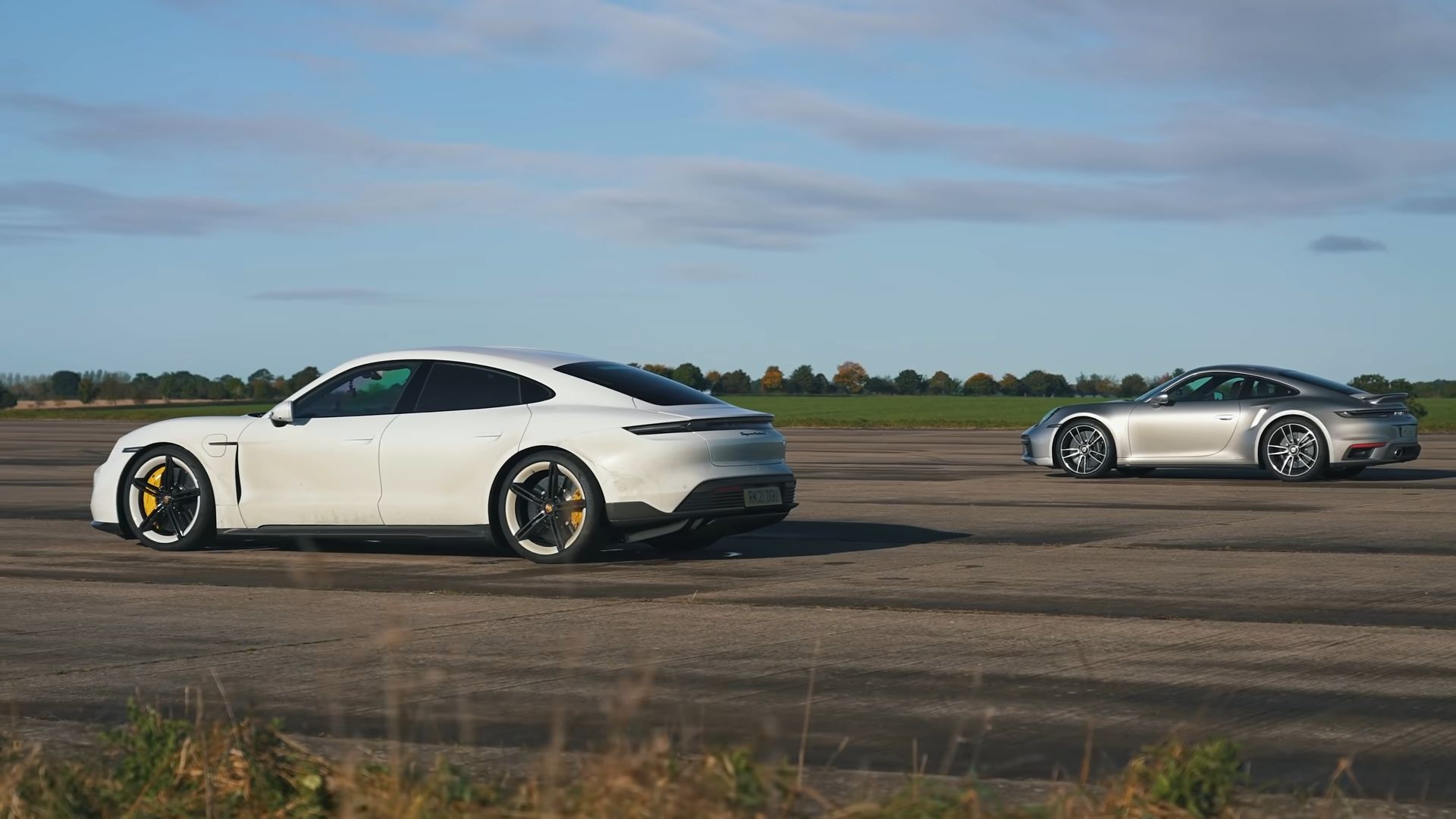When EVs take on internal combustion engines, they win almost always. Cars like the Tesla Model S Plaid have beaten some of the beloved heavyweights, like the SF90 Stradale, the Nissan GT-R, the Lamborghini Huracan, etc. However, its chief rival, the Porsche Taycan, hasn’t had the same impact. So, how does the Taycan, in the top-spec Turbo S trim, perform against one of the best internal combustion-engined cars on the drag strip, the Porsche 911 Turbo S? Let’s find out.
How Much Power Does Each Of Them Make?
Going into the race, the Taycan Turbo S holds the edge. It features a dual-motor setup that puts out 761 horses and 774 pound-feet of twist. All the wheels are powered by a two-speed transmission. It isn’t exactly light. The Taycan Turbo S weighs in at 5,060 pounds!
Its fuel-powered twin, the 911 Turbo S, is powered by a 3.8-liter, twin-turbo, flat-six mill that churns out 650 horses and 590 pound-feet of oomph. Power is routed to all four wheels via an eight-speed dual-clutch automatic gearbox. It weighs 3,616 pounds; around 1,440 pounds lighter than its EV rival.
The 911 Turbo S Is A Beast!
The race was conducted on a wet strip. Both the cars were equipped with the same set of tires – Pirelli P Zeros – to keep the race fair. The first race was conducted with the stability control on. The Taycan got a lead right off the line, but the 911 started catching up soon. However, it couldn’t get past the Taycan at the finish line and the latter won by the nose. Both the cars completed the race in 10.7 seconds.
For the second race, the stability control was turned off on both cars. The Taycan got a better start here as well, but the 911 wasn’t too far behind. It managed to get ahead and kept at it to get a win over the EV. The 911 Turbo S completed this race in 10.8 seconds, whereas the Taycan Turbo S took 11 seconds.
Next up was a rolling race from 50 mph in the Normal mode. The Taycan had a better kickdown, but at around 90 mph, the 911 Turbo S started sailing past it. It won the half-mile race by an impressive distance. They attempted the race again, this time from 30 mph in Normal mode. The result was exactly the same this time, too.
To mix things up, both the cars were slot into their sportiest setting from 50 mph. This time, the Taycan was a tad bit more aggressive and stayed for a little longer. But at around 110 mph, the 911 Turbo S once again went past the Taycan Turbo S.
The final round was the brake test from 100 mph. The 911 Turbo S won this test, too, by stopping in a shorter distance.
Conclusion
Well, this race wasn’t the best endorsement for the Taycan Turbo S. If you had to pick one of these cars as your only commuter, which one would it be – the Porsche 911 Turbo S or the Taycan Turbo S? Share your thoughts with us in the comments section.

